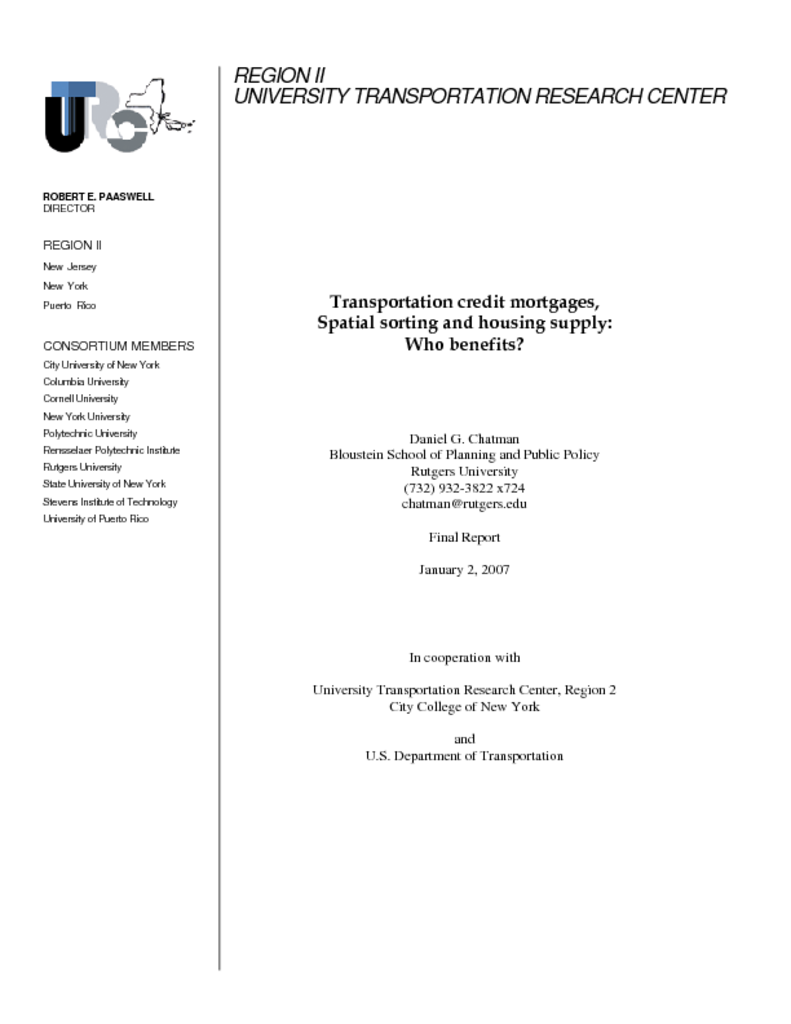<p>Transportation credit mortgage (TCM) programs are intended to reduce auto use, decrease sprawl, and increase housing options for low- and moderate-income households. The centerpiece of such programs is a credit to income for expected savings on auto use for households who purchase a home with good transit access and/or high population density. It is hoped, first, that a higher share of those in target neighborhoods will consist of households who use transit and walk; second, that there will be more housing provided in target neighborhoods. But both outcomes depend on conditions that may not hold. In markets where housing costs are high, and where TCMs have often been targeted, they are particularly unlikely to work as intended. Such markets are often characterized by high demand due to growth pressures and significant policy constraints on new development. Given those conditions it is possible that existing owners of land in TCM-targeted areas will receive a one-time windfall in the form of a higher sales price for their homes; low- and moderate-income households will pay more for housing with little or no benefit to show for it; and the share of travel via alternative modes will remain stable or decline. The TCM may not have these unintended negative effects in high-turnover, low-growth markets with a high elasticity of housing supply?but in such markets, paradoxically, the TCM is less likely to make a difference in housing bids because fewer households are likely to be constrained by standard lending criteria</p>




